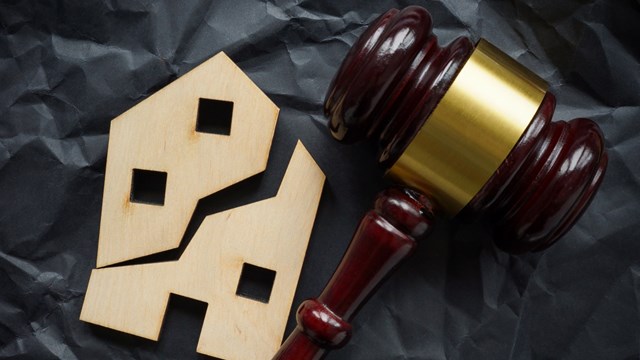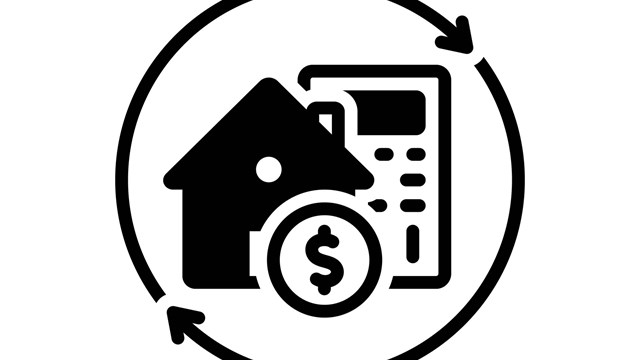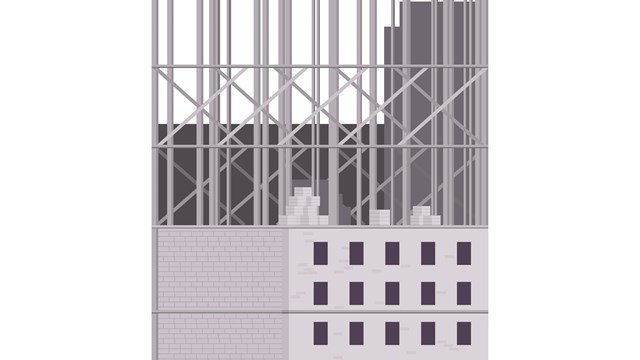
In the early 1990s, thousands of New Yorkers purchased apartments in newly converted co-op buildings; in the early 1990s, thousands of New Yorkers also watched their investments collapse. The co-op market was tanking, equity was at risk and many apartments sat unsold. As a result, the financial solvency of hundreds of buildings was in danger as well.
According to a January 1995 New York Times article, the deputy New York State attorney general—who at the time headed the state's Real Estate Finance Bureau—estimated that 10 percent of the 4,000 buildings converted to co-ops in the city since 1980 had, at that point, fallen into default—"a category that can range from one missed payment to several missed payments to foreclosure and, the ultimate—and extremely rare—nightmare for those involved, deconversion."
Hard as it is to imagine such doomsday scenarios in today's more-than-robust New York City housing market, the truth is that there are plenty of buildings throughout the five boroughs that could very well be in danger of defaulting on their financial obligations. Or buildings that have members whose financial troubles will come back to haunt the board if they're not adequately handled.
A Perfect Storm
Gary Kokalari, a former president/ treasurer of his own co-op building and now an expert in co-op financing for Merrill Lynch, remembers this problematic decade well, especially since the building he was living in was one that went into default.
"The New York real estate market started to experience problems in the late 1980s that extended into the early 1990s," he explains. "With the exuberance the real estate markets have experienced in the past few years, people tend to forget that real estate prices actually declined in value in the early '90s. I remember units in my Upper West Side co-op building declining by about 30 to 40 percent from mid '80s peak to the early '90s trough. There was a confluence of factors that caused this depressed real estate market, including tax reforms that reversed tax policies favorable to real estate assets, oversupply that resulted from overbuilding fueled by easy money, an unprecedented wave of co-op conversions, and what eventually turned to a liquidity crisis."
Fast forward to today's real estate market—the historically low interest rates that many borrowers have enjoyed over the last few years have had a significant impact on the housing market. "Cheap money" has boosted home sales, and has encouraged both individuals and building boards to borrow large sums, either to purchase apartments, refinance existing mortgages or undertake large capital improvements.
"One of the more potent aspects of lower interest rates is that this allows borrowers to use more leverage to buy higher-valued real estate," says Kokalari. "For example, if a person was willing and able to borrow $1 million to purchase a co-op or condominium at an interest rate of seven percent, assuming an interest-only mortgage, the annual debt service would be $70,000. If rates drop and the borrower can get a mortgage with a rate of five percent, assuming the borrower is still able to pay $70,000 in interest, for the same amount of debt service the borrower can now support a $1.4 million mortgage. So the drop in the interest rate provides the borrower with $400,000 in additional purchasing power."
Kokalari explains it's not quite this simple, because the borrower would have to satisfy a lender's underwriting criteria, but he says this shows how lower interest rates can lead to buyers having more money to bid on apartments. And, he says, "As you learned in Economics 101, the more bidders you have for an asset, the more likelihood there is that the price will be bid up. The drop in interest rates over the past few years was an important part of the equation of why there was such powerful appreciation in real estate prices."
Cheap Money's Downside
This borrowing boom has had a downside, however—defaults are becoming more common as borrowers find they may have taken out more than they can comfortably afford to pay back. And although the situation isn't as dire as it was back in the '90s—especially for buildings—there is still concern over the stability of individuals and their personal mortgages, especially those with adjustable mortgages who may find themselves overextended.
According to ConsumerAffairs.com, the number of foreclosure filings—including default notices, auction sale notices and bank repossessions—were up 19 percent in May 2007 from the previous month, and up nearly 90 percent from May 2006. The report from RealtyTrac, a real estate data firm, shows a national foreclosure rate of one foreclosure filing for every 656 U.S. households during the month of May. The company says there were a total of 176,137 foreclosure actions nationwide during the month.
Despite the big numbers involved in New York City mortgages, it may surprise some to know that New York didn't rank in the top 10 of states with high foreclosure rates. Steve Curley, executive vice president and chief administrative officer for First National Bank of Arizona Mortgage Division, wasn't surprised.
"Although the property market is a little soft and we are in a mini-recession, payments on homes are still pretty affordable," says Curley. "Honestly, your standard borrower is in a nice co-op in Manhattan and not defaulting. In our company, our condos and co-ops portfolio is performing better than the single-family housing portfolio."
What About Buildings?
As for buildings, Barry Margolis, with the law firm of Abrams Garfinkel Margolis Bergson, LLP in New York City, says that it's very rare for a building to default on its underlying mortgage.
"That's very rare, because depending on when the conversion took place, it could be that the building is in a less desirable area, the market has gone down and the building is not making enough money in terms of its maintenance to cover the underlying mortgage," says Margolis.
"But mortgage lenders would rather work out a foreclosure on a co-op building," Margolis continues. "When an underlying mortgage gets foreclosed on, the building converts to a rent-controlled, rent-stabilized building and all the proprietary leases are cancelled. The shareholders now have problems, lose the equity in their units and have the obligations to pay back. I can't imagine any group that would let the building default on the underlying mortgage."
Margolis also explains that there are two kinds of co-op defaults. "The first is where a cooperative shareholder isn't paying maintenance, and that gives the co-op the opportunity to foreclose on the unit. If you have a bank loan because you purchased with financing, you have to pay the bank—and if you don't pay, the bank has the right to foreclose. We've seen situations where there is plenty of equity—the apartment could be on Fifth Avenue—but the shareholder can't get out of their own way because they are having a health issue or some other trauma that results in them going into default. The lender is compassionate, but at the same time there is an obligation on a loan or maintenance. If you don't step up, [foreclosure] is the option the building or lender has."
When an individual defaults on his or her condo, however, Kokalari explains that it puts homeowner associations in a state of stress. "They also have the ability to file a lien if they need to and the homeowner would have to pay off the lien before they sell the house."
Red Flags
Other options when a homeowner is in default include a payment plan of designated time, such as three or 18-months depending on the circumstances.
There are warning signs that shareholder/unit owners can pay attention to that might indicate that the building is in severe financial trouble and on the brink of default. Kokalari explains how he, as president and treasurer of his co-op, uncovered his building's financial woes. "In 1990, while attending a Mortgage Bankers Association luncheon, I had heard a rumor that our sponsor, one of the largest converters in New York, might be having financial difficulties," says Kokalari. "Although this was surprising and at the time I could not conceive of a sponsor default, to be safe I contacted our managing agent and our lawyer, a well known co-op industry attorney, and asked them to investigate."
Kokalari's info was spot-on, and he found out that the sponsor had missed that month's payment on the underlying mortgage. "We quickly moved to take legal action and negotiate with the mortgagee to cure the default," he says.
Kokalari says this set in motion a chain of events that caused the sponsor to default on the rest of his large portfolio of co-op buildings. He offers three warning signs that shareholders can be on the lookout for:
"First, excessive and recurring maintenance increases or assessments. That may indicate a shortfall in the operating budget. Second, look for increases in shareholder arrears on maintenance payments. The board should watch this like a hawk and quickly move against any shareholders, who default on the terms of the proprietary lease by giving them required legal notice and moving to foreclose if the shareholder or the mortgagee does not cure. Third—and related to the second reason—in the event the shareholder is in arrears in violation of the proprietary lease, the board should immediately provide notice to the mortgagee."
House-hunters beware: "One tell-tale sign of a problem," says Margolis, "is the frequency of assessments against the shareholders." Margolis says this is a red flag that prospective buyers should take as a strong indication against purchasing an apartment in a building.
Lisa Iannucci is a freelance writer, published author and mother of three living in Poughkeepsie, New York.









Comments
Leave a Comment